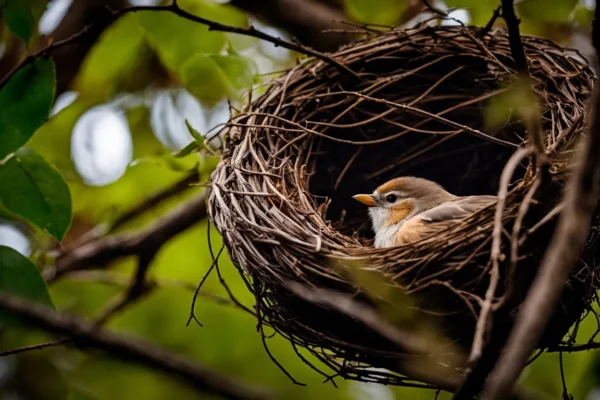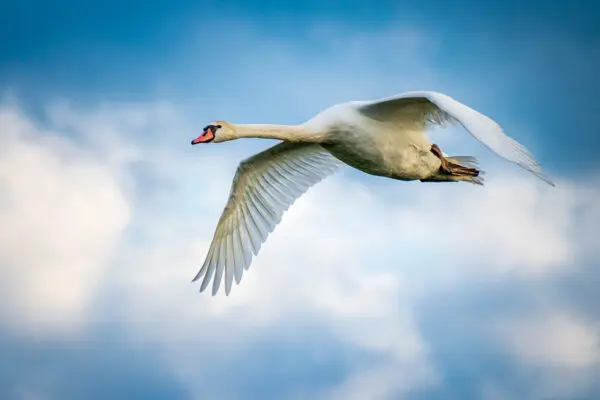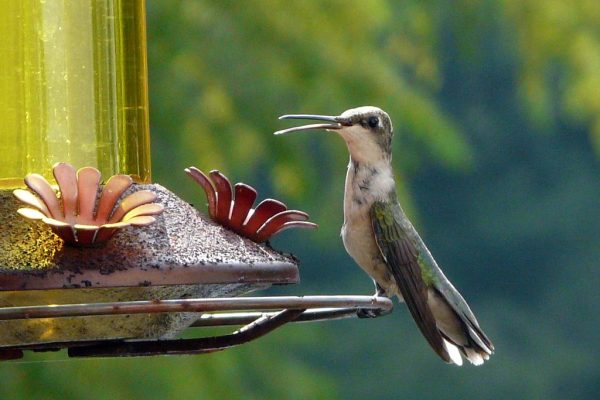Birds are well-known for not just their songs, but also for kissing! Or, at the very least, a kissing motion. Although it may seem weird, birds kissing is more frequent than you may think. However, it is not as simple as it seems.
It’s frequently an sign of courting when birds seem to be kissing. Before the mating season in the spring, birds often meet beaks and exchange food. The birds’ beak contact may also make it look as though they’re kissing.
While birds do not kiss, they do exhibit love in their own special way. Some birds even seem to kiss people as a show of affection that they have been trained. Birds’ loving behavior might make them seem to be dog-like at times. Continue reading if you’re curious about what it signifies when birds kiss one other.
What does it means when birds kiss?
When you witness two of your birds kissing at first glimpse, you let out a pleased sigh. You think to yourself, “It’s so adorable.” Your birds have fallen in love with one other! Is that the case?
I’m sorry to bust your bubble, but when two birds kiss, it may mean a lot of different things, and romantic gestures are typically at the bottom of the list. When two birds kiss, there are many different interpretations.
1. Feeding
What looks to be a kiss might instead be a bird passing food to another’s lips. This is also known as courtship feeding.
The following is a diagram of how courtship feeding works. Seed is sought by one bird, generally the male. He swallows it, seeks for a female, and regurgitates the meal into her mouth. This is a habit that duos will engage in often if they have a cardinal.
Although the term “courtship feeding” is used, and it is a behavior that occurs between a male and a female bird, it does not imply that the birds are in love. The purpose of courtship feeding is not to show love between male and female birds.
Instead, it’s the male bird that keeps an eye out for the female and makes sure she has enough food to breed.
2. Affection/Acceptance

That isn’t to say that loving kissing between two birds isn’t possible. However, don’t automatically think that love indicates romance; affection between birds may also be platonic.
The parakeet is prone to this kind of behavior. When living with a cage mate, this bird will form a strong attachment with its new companion. The parakeet and the newcomer may start smooching after the newcomer has earned the parrot’s confidence.
This is a significant thing to a parakeet. Kissing another bird indicates that the parakeet regards that bird as a family member. This gesture isn’t very romantic, yet it’s still quite touching.
3. Grooming
Birds are mainly capable of grooming themselves. I say generally because certain regions of the bird’s body, such as the feathers surrounding its own face, are just out of reach. Because preening occurs every hour or so, you may witness two of your birds kissing on a semi-regular basis.
The second bird might be grooming the feathers that the first bird is unable to get. They’re cleaning trash and filth from the bird’s face and keeping the orderliness of the facial feathers via kissing in this case.
Kissing also transfers natural oils to the receiver since birds have uropygial or preen glands.
The receiver will feel relaxed and pleased after being kissed in this manner. The friendship between the two birds strengthens as well.
4. Exploration
If you placed two dogs in the same room for the first time, you’d expect them to sniff at each other to get to know each other. Birds behave similarly to humans in that they will approach another bird and nip them. This seems to be a kiss, but it’s really an exploration.
Many birds, such as parakeets, start utilizing their beaks at an early age. As it learns the limitations of the environment around it, the bird may peck and chew. If you add another young bird to the mix, the two will attempt to bite each other to test who is the stronger (and/or more patient) of the two.
If your bird is an inquisitive biter, you should teach them to quit doing so as they grow up. If you don’t, the biting will continue until you’re an adult! Because of the bird’s size, their bites will be more harmful by then.
Does every bird stay with the same mate?
Many birds in the wild create lifelong bonds with one another. Granted, birds may not have particularly long lives, but it does not diminish their dedication. Long-term attachments, on the other hand, aren’t common among all birds.
As you can see, various bird species have varied behavioral conventions. Avian specialists, for example, often observe that some of the birds who establish lifelong pair bonds have the greatest brains in relation to their physical size.
These birds normally live in flocks, according to the flock’s customs and procedures, and sharing their life with a single spouse. Corvids and parrots are examples of this kind of bird.
Other birds, like the mynah, develop long-term relationships with their mates. However, if one of their companions dies, they may easily move on. Swans and eagles, for example, remain with a single partner until that mate dies. They only search for other partners after that.
Finally, there are birds with several partners, such as house wrens and hummingbirds, where the female bird accomplishes all of the nesting on her own. But, when it comes to demonstrating love, do all birds kiss and act in the same manner as humans do?
How do birds court?
It’s never simple to court someone. And, for birds, attracting the attention of a female counterpart may be difficult and exhausting. Not to mention the fact that there is a lot of competition.
Birds will kiss in an effort to entice their potential spouses with food and rewards. Furthermore, you’ll observe that birds use every weapon at their disposal to disable their present beloved.
1. Performing vocals
To attract mates, several bird species sing or dance. It’s a strategy for them to seem desirable as mate material. From mute swans to bald eagles, birds sing to attract a partner. Only the males sing in certain species, and the female response is seen as bonding or acceptance of the offer.
However, for certain birds, singing is a technique of warding off rivals and claiming territory. As a result, singing might have unfavorable consequences, particularly during mating season.
2. Performing dances
There aren’t many birds that dance. Those that do, though, may put on a show. During the mating season, many bird watchers enjoy this activity. You could even see your bird bobbing its head to the beat of the music.
Some birds even join groups to attract the attention of adjacent females, much like humans in a nightclub dancing together. Furthermore, parrots and peacocks flaunt their plumage, while some birds demonstrate strength and others demonstrate endurance.
Birds like the Laysan Albatross, Red-capped Manakin, Costa’s Hummingbird, and Magnificent Riflebird need to cut a rug to court their spouses.
3. Exhibits
A peacock show is unlike any other in terms of beauty and grandeur. When you look at the more common brown peahen, you may wonder what all the hoopla is about. Male birds, on the other hand, have brighter plumage and more vivid feathers to attract females.
Birds of paradise from Papua New Guinea hang from a branch to capture their partner’s attention. Peregrines, on the other hand, are acrobats who fall through the air to grab the attention of the fairer sex. The birds’ displays include anything from puffed-up chests to elevated crests and expanded wings.
4. Grooming
This is something that looks like kissing. Preening, on the other hand, is when birds clean each other. And, in the majority of situations, it is a gesture of affection. Organizing feathers, plucking out broken feathers, and keeping ectoparasites out of the plumage are all examples of preening.
Preening may also signify that the birds are using preen oil from the uropygial gland at the base of the tail to waterproof their feathers.
Surprisingly, parakeets and budgies preen their pet guardians as well. It demonstrates a feeling of trust and closeness between the pet and the pet owners once again.
5. Providing nourishment
When it comes to most bird species, kissing typically boils down to this. Some birds, mostly parrots, do, however, kiss to express affection and trust. The remainder, on the other hand, feed their spouses by regurgitating into their mouths.
The beaks are positioned to ensure that no food is wasted, yet it looks a lot like kissing. Food is very valuable to birds of all kinds and sizes. It denotes the distinction between extinction and survival.
This is a common behavior among most guys, and it is not limited to the mating season. Some male avian animals, however, continue to feed the female bird while she is nesting.
6. Construction
When it comes to construction, the house wren is a master. The male wren constructs numerous nests for the female with whom he wishes to mate. And the female will choose one from a variety of options.
The majority of the male wren’s nests are now completed. It’s also said that the female would generally choose the nest with the highest potential.
The female then proceeds to build the nest after choosing her choice. The test is completed by inserting a liner inside the nest to make it more secure. So you’ve got the house wren working as an architect and a female working as an interior designer.
Some male bird species, on the other hand, create elaborate and interesting nests to entice their mates. The more elaborate the nest construction, the more likely the male bird will win the heart and hand of the mate he desires.
Is It Possible For A Bird To Love Its Owner?
It’s difficult to say if they experience love in the same way that humans do. However, it is undeniable that birds develop a relationship with their owners over time.
In the wild, seeing a bird with its partner isn’t always indicative of their relationship, since they often move on after mating season. As a result, although they may display love at the moment, it is unlikely to last.
Pet birds differ from wild birds in this demonstration of devotion. Because confined birds frequently spend their whole lives with their owners, they tend to build a stronger attachment with them.
When you spend time with a bird, you’ll see that they have a broad range of characteristics, just like any other pet. An owner may get acquainted with these peculiarities and learn to interpret their birds’ behaviour.
When you can keep a close eye on a bird, you can see how they react to things that make them happy or upset. While it’s unclear what feelings a bird may be experiencing, they certainly exhibit actions that indicate they are feeling something.
Do Birds Give People Kisses?
So, you’re aware that birds will kiss each other even if they are not sexually mature and of the same gender. But what about human-bird relationships?
Is kissing reserved for other birds, or would they offer their favorite people a smooch as well?
That is very dependent on your bird! Yes, if it has an outgoing nature, it may attempt to kiss you.
The bird’s species is also important. Some birds, such as the parrot, will kiss more like you and I know it.
Final Thoughts • Kissing birds isn’t as unusual as it may seem. It occurs often, and there’s a reason why their beaks connect. Since the male bird is feeding the female, they’re not doing it to exhibit PDA, but rather as a necessity of survival.
Birds don’t kiss, but that doesn’t mean they don’t have emotions. Birds that are kept as pets and birds that live in the wild may create connections.
Associated Issues
It will be simpler for you to comprehend why your own bird is behaving in a specific manner now that you are aware of the many ways in which birds may express love.
However, many pet owners may still be perplexed by their feathery companions’ behavior. Continue reading to get answers to some of the most frequently asked questions.
Why Do Birds Bite each others Beaks?
Biting the beak is a sign of hostility. Two males are normally involved in the attempt to establish territory. Bullying is inevitable among a flock of birds. When there is a definite leader, it will peck at the beaks of the other birds to demonstrate authority.
Birds in the wild show a similar attitude toward other males. If one man has established dominance, other men will be tolerated. There will, however, be shows of power. Biting the beak of another bird is the simplest technique to do so.
Is Kissing Between Same-Sex Birds Common? And why is that?
It should come as no surprise that same-sex birds would kiss now that you understand the variety of reasons why two birds could kiss.
Keep in mind that kissing birds is not the same as kissing humans. It has nothing to do with romance and has nothing to do with sexuality. It is not a sign of homosexuality if two birds of the same gender kiss one other.
There have been reports of gay behavior in birds, but only in Chilean flamingos and penguins, not in domestic birds like cardinals or parrots.
If your bird kisses another bird of the same gender, you don’t have to be concerned about it having kids. The two birds might be smelling each other out, as I said in the previous section.
They might also be expressing friendliness or kinship. It’s possible they’re grooming each other.
Even if both birds are female, courtship feeding is not a kissing action you’ll observe in two birds of the same sex.
What is the explanation behind this? Female birds cannot procreate with other females, therefore preparing one (or both) female birds for reproduction is pointless. It’s for the same reason that male birds are unlikely to feed one other through kissing.
What Is the Best Way for Birds to Kiss?
As previously stated, birds may occasionally feed one other by touching their beaks. It seems to be a kiss to the untrained eye. Many tame birds, on the other hand, learn to kiss from their humans.
Parrots, in instance, kiss in a similar manner to humans. They press their beak towards their owners’ cheeks or mouths. Some people make smooching noises. Others go so far as to lick with their tongue, almost as if they were a dog.
Beak caressing, on the other hand, should not be interpreted only as a kind gesture. Birds may sometimes touch their beaks to express authority. A kiss, for example, in parakeets might mean probing a newcomer’s presence or a flock member’s acceptance and tolerance.
On the other hand, it might be an obvious sign of violence. Pet owners are urged to keep a tight check on their avian companions in such situations.
Birds, on the other hand, display love in a variety of ways. And not merely in the form of a kiss. Furthermore, while serially monogamous (taking different mates every mating season) or as a bonded couple, birds display love.







One thought on “Do birds kiss? Interesting Facts You Didn’t Know About Birds Kissing”